The Escapology Duvet Buying Guide
How To Select The Perfect Duvet.
Ever wondered what the difference in duvets is? Here we demystify the fuss about 'tog' numbers are the numerous fillings to choose from.
So what is a 'tog'?
Most people have heard about togs but to many, they are just a mysterious number on the label of your quilt. 'Togs' are actually a scientific measure of the relative warmth of a duvet. Duvets are placed on a metal plate at body temperature in controlled conditions, and a measure is taken of the heat lost through the duvet to the surrounding environment. The higher the tog rating, the warmer the duvet. The scale ranges from 1 tog all the way up to the warmest duvet in the UK, an 18 tog duvet.
How warm or cold you want to be whilst sleeping is very personal but, in general, you’ll probably want a 4.5 tog duvet for summer, a 9 tog for spring or autumn, and a 13.5 tog for winter. If you don't have the space to keep three different duvets for your bed, we'd recommend either choosing a 9 tog duvet, or buying an all seasons duvet instead. An all seasons duvet combines a set of matching 4.5 and 9 tog duvets, which you can use individually for summer (4.5 tog) and spring/autumn (9 tog), and then fasten them together for winter.

Choosing the right duvet fill
The filling is what makes a duvet incredible…or inferior. If the manufacturer has skimped on stuffing, you’ll soon know about it and your duvet just won't last.
If naturalness is important to you, look at feather and down – it’s warm, soft, and breathable. A duvet with a high ration of down is lighter and loftier as the down cluster is spherical to trap a lot of heat (a bit like a dandelion head), while a feather is long, flat, and heavy. A light duvet doesn’t mean a cool duvet; down retains your body heat, keeping you at just the right temperature. Where the down comes from can also be important. Hungarian down and Swedish down are often used because they're evolved to keep warm in cold weather. Some of the best down comes from Canada, so have a close look at the label.
Another natural choice is wool. Wool is unique: it’s crimped, elastic, and grows in clusters. It’s the crimp in it that makes wool chunkier and able to retain air. When the body is cold, wool removes moisture from the skin and traps dry air and warmth. When the body is warm, the wool retains air, removing excess heat and moisture. It’s hypoallergenic (mites and bugs hate it), dirt resistant, resilient, and eco-friendly.
The luxury choice is natural silk. Duvets containing silk are what we at Escapology recommend. Silk has similar properties to wool: it’s breathable, hypoallergenic and surprisingly strong. Silk worms spin their cocoons with a fibre stronger than steel! This is great for a duvet filling as it means it survives washing and even tumble drying (although it does begin to lose its natural properties when it’s washed too much).
Want to avoid natural fillings then a synthetic microfibre duvet is a great choice – but not all microfibre is equal. The best microfibre strands are made with a fine denier and high quality material to be very soft – in fact, to the touch they could be mistaken for silk fibres. When stuffed into a duvet, fine denier microfibre does a good job at mimicking the feeling of a down duvet but it will get flattened a little more quickly.
Hollowfibre is another synthetic choice. It’s thicker and more wirey than microfibre and its strands are hollow. This provides greater loft and structure in the duvet. It is a really hardwearing product and excellent value for money. If you’re an allergy sufferer but don’t want to opt for silk or wool then look out for a hollowfibre or microfibre duvet that has been treated with an anti-allergy chemical.

A Quick Guide To Duvet Sizes
Choosing your duvet size might seem as simple as looking at the size of your bed but, to combat duvet-hogging, we like to recommend that you buy one size bigger than your mattress.
- Cot Bed Duvet: 120cm x 150cm (3ft 11" x 4ft 11")
- Single Duvet: 135cm x 200cm (4ft 5" x 6ft 7")
- Double Duvet: 200cm x 200cm (6ft 7" x 6ft 7")
- King Size Duvet: 230cm x 220cm (7ft 7" x 7ft 3")
- Superking Duvet: 260cm x 220cm (8ft 6" x 7ft 3")
- Emperor Duvet: 290cm x 235cm (9ft 6” x 7ft 8”)
How is your duvet is made?
The construction of your duvet is important in its performance. There are two main types: box stitch and baffle box.
Box stitch is also referred to as ‘sewn through’ and it means that the top and the bottom cover are sewn together in a criss cross pattern to form boxes. Each box has the same amount of filling inside and the stitching keeps it that way so that the filling is evenly distributed across the duvet keeping an even warmth.
Baffle boxes are actually cubes. They’re even more complicated to make as they require strips of material to be sewn between the top and the bottom layer of material (also in a criss-cross pattern to form boxes). Ultimately it has the same purpose, to keep the filling evenly spaced across the duvet by compartmentalising it, but this construction increases the volume of each box by making it into a cube. It means that there is more space for the filling to circulate and aerate, allowing it to regain its shape and size. It also makes the duvet look bigger as it has more height.
Baffle boxes are more expensive but that doesn’t necessarily mean better. Both serve a purpose. Generally, box stitch is best for lighter duvets (lower togs) as less filling is in each box and therefore less space is needed. Baffle boxes are best for heavier duvets (higher togs) as they accommodate more filling and give it the space to expand, trap the air, and insulate.
So next time you are shopping for a duvet, remember to think about size, quality, and construction. Cheaper duvets are cheaper for a reason and they won't perform as well as something of a higher quality. Higher quality duvets also last longer and can stand being cleaned, amny cheaper duvets jsut won't.



